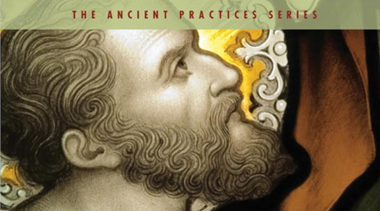Lent's Faux-Fasting

Fasting — tis the season. Because it is the season a good question can be asked: What is fasting?
Try defining it, and I’ll make a suggestion. Go ahead — in your mind define it.
Here’s my suggestion: If, in defining fasting, we are tempted to define fasting as something we do “in order to” get something, I suggest we need to look again at the deepest wells of the Christian fasting tradition: the Bible. In my book, Fasting, I suggest that in the Christian tradition we somehow got sidetracked.
We turned fasting into an instrument for personal spiritual formation, and in doing so lost one of its — if not its — key element. Fasting is not so instrumental in the Bible as it is responsive.
Fasting done to get something is faux fasting. Abstinence and fasting are not the same thing, so giving up chocolate for Lent is faux fasting. I can hear the grumbles, so give me a chance here.
Instead of seeing fasting as a discipline we use, do, or practice “in order to” get answers to prayers, “in order to” become more attuned to God, or “in order to” become more spiritual, the Bible’s focus is on fasting as a response to life’s sacred, grievous moments. If in defining fasting you get quickly to the “in order” element… I suggest look again at the Bible.
So, how can we tell if we are fasting? Simple answer: Are you grieving or are you looking forward to something happening for you? If the former, fasting; if the latter, not fasting.
The Bible urges us to move away from seeing fasting as something done in order to get something, and exhorts us to learn to see it as a response to some grievous or sacred moment/event. (I use a letter system.)
A (grievous moment, like death and sin) –> B (act of fasting) –> C (benefit)

I hear too many suggest we should fast (B) in order to get (C). I suggest in my book that the biblical pattern is much more A (grievous, sacred moment) triggering the natural response of fasting (B), whether we get C or not. Furthermore, fasting is an act whereby we enter into the pathos of God regarding that grievous moment.
And one more element to think about as we enter Lent. To be sure, Lent is a time for fasting, but I suspect most of those who speak of “fasting” are talking about “abstinence” (not the same as what the Bible means by fasting). Fasting is suspension of all food (and sometimes drink) for a designated time — not the suspension of kinds of food (or internet, or social media). What happens when we use the word “fast” with “Twitter”? I suggest we are losing fundamental elements of fasting — the response to grievous, sacred moments.
The Church calendar is designed to embody the gospel itself on an annual basis: we begin the birth of the Messiah and then through a season called Epiphany and then we move into Lent and Holy Week with focus on Good Friday and Easter, and then we head for Pentecost and the rest of the year is called Ordinary Time. Ordinary Time is designed to focus on various elements of the Christian faith and mission. Lent prepares us for the gospel events — the life and death and resurrection of Jesus.
How do you prepare for Lent? Or how will you prepare for Lent? Or, from another angle, why do you not prepare for Lent?
Well, some will say, the NT doesn’t teach a church calendar and so there’s no need for it. To which I (really not “I” but the Church) say, “Hold on, dear friend.” God so ordained Israel’s life so that it would re-live and embody the great saving events in God’s relationship with Israel. So, let’s begin right there: God evidently really does care to institutionalize saving events into a calendrical form. The Christians, from very, very early, wisely restructured the calendar to be shaped by the saving events in the life of Jesus. (And I don’t say this to snub my messianic friends who are Jewish. I see no reason why we can’t combine the Christian calendar with Israel’s calendar.)
So, if we are going to fast, let’s fast.
Jesus Creed is a part of CT's
Blog Forum. Support the work of CT.
Subscribe and get one year free.
The views of the blogger do not necessarily reflect those of Christianity Today.


















